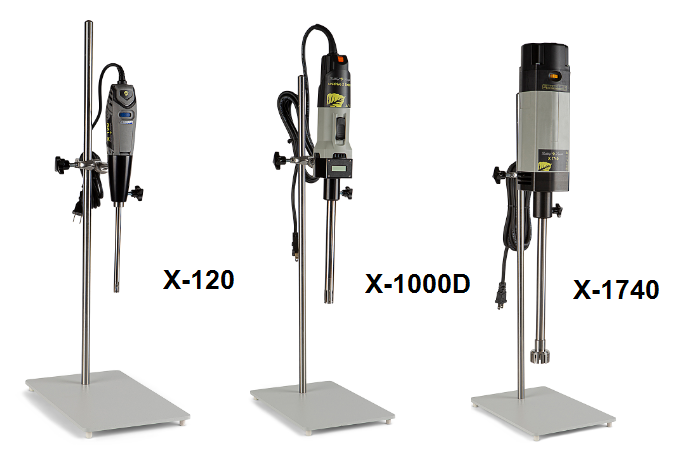You have no items in your shopping cart

24/7 Customer Service

Satisfaction Guarantee

Fast Delivery

Reasonable Price
Understanding Modular Homogenizer Systems
Modular homogenizers, also called emulsifiers, dispersers and mixers, find wide application in research and pilot production labs for food and chemical processing, cosmetic manufacturing, biotechnology and pharmaceutical production among others.
Think of a modular homogenizer as a sophisticated Waring blender that performs multiple functions on a much higher scale operating at controllable speeds that reach as high as 45,000 revolutions per minute. The speed you select depends on what you are processing, but because higher speeds process samples quicker it can help protect materials from heat damage. Applications for modular homogenizers in addition to those mentioned above include but are not limited to:
- Fast mixing
- Decreasing reaction time
- Disintegration of agglomerates – smoothing or refining
- Breaking down organic and macromolecular substances
Goldleaf Scientific modular homogenizers used in research and product development work with samples as small as 0.1 milliliter to as large as 40 liters or more. Small units can be hand held but most are mounted on an adjustable stand to provide needed stability. They are called modular homogenizers because individual models – based on capacity and power – can be fitted to perform a variety of mixing functions. Here we’ll take a brief look at the components of a modular homogenizing system.

Homogenizer motors, also called drivers, are sized in accordance with users’ requirements in terms of speed and electrical power in terms of watts. (Air-powered homogenizer drivers are available for use in volatile environments.) The power needed relates to the materials being processed – i.e. highly viscous samples require higher power. Most motors are offered with variable speed control, which is also useful to minimize splashing on start-up. Digital speed displays are a useful feature to support record keeping and to assure like conditions are met in when processing subsequent batches. Optional separate power control modules are available for those models without variable speed controls.
Homogenizer generators consist of two parts and represent the business end of Goldleaf Scientific modular homogenizer systems. They consist of a rotor attached to a generator shaft (or axle) and a stator the configuration of which complements the rotor design. Homogenizer generators do the actual processing. Goldleaf Scientific personnel will help you select rotor and stator configurations among the wide variety available based on what you are processing.*
The stator is attached to the end of a generator tube with ports allowing media being mixed to circulate and help cool the assembly. When the shaft and rotor are inserted into the generator tube the result is a shaft-generator assembly. These are available in different lengths depending on the use of the modular homogenizer. The generator tube is inserted into the homogenizer driver until a click is heard signaling that the shaft drive pin has seated. The assembly is fixed in position by a hand-tightened fastening screw.
Components included in the shaft-generator assembly are Teflon or ceramic seals, bearings, O-rings, gaskets and other subcomponents based on the specific homogenizer model selected. Special tools are required to attach and remove shaft-generator assembly components.
Further processing options are available by using flow through chambers. See our special Goldleaf Scientific post on this equipment.
Adjustable stands or mounting systems for homogenizers are required to keep your dispersion equipment from oscillating and possibly damaging itself and product containers. They also maintain the generator off center in the container to avoid the formation of a vortex. Homogenizer drivers are designed to accept a support rod that is affixed to a crossover clamp that in turn is affixed to the vertical support rod and the product container stand.
Maintaining Goldleaf Homogenizers
Shaft generator assemblies should be cleaned after every use and especially if you are changing the formulation of materials being processed. Basic cleaning information is available in user manuals but for more detailed information see our post on Cleaning Tips for Goldleaf Scientific Homogenizers and Emulsifiers.
For complete information on GOLDLEAF Scientific homogenizer components contact us at 510-487-1390 or at [email protected]
*Viscosities are broadly classified into fine, normal, coarse (or medium) and knife. Fine (GOLDLEAF designation F) is for low to normal viscosity liquids requiring a high degree of homogenization. Normal (GOLDLEAF designation N) is for aqueous viscosity such as water and cooking oils. Coarse (GOLDLEAF designation V) is for medium viscosity liquids or coarse media. Specify a knife generator for stringy fibrous materials.

